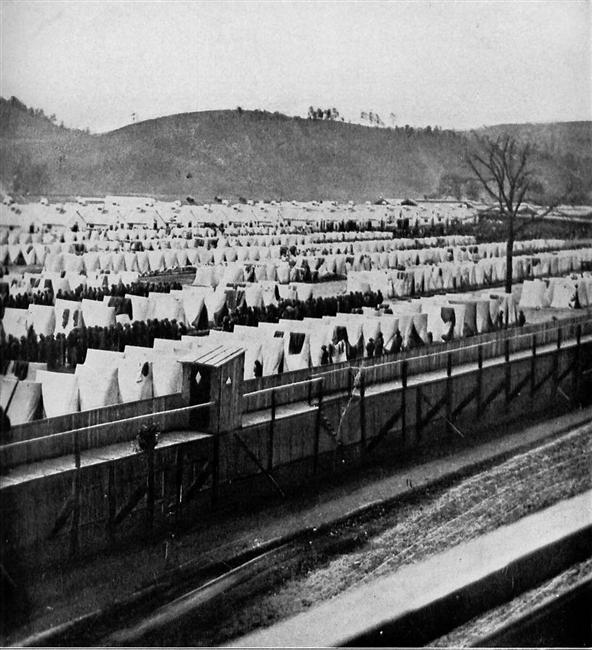|

Elmira Prison Before the
Additional Barracks Were Built
This is an early picture of Elmira Prison
before additional barracks had been constructed. The old barracks are
visible in the middle distance, while almost the entire space in front is
covered with tents under which a considerable part of the Confederate
prisoners were accommodated until the winter. The Elmira Prison was opened
in May, 1864. Before the end of August the prisoners there numbered almost
ten thousand. Conditions here were always bad, partly on account of the
insufficient shelter, and partly because of a feud between the commandant
and surgeon. The latter, E. F. Sanger, wrote under date of November 1, 1864,
to Brigadier-General J. K. Barnes, Surgeon-General of the United States
Army: "Since August there have been 2,011 patients admitted to the hospital,
775 deaths out of a mean strength of 8,347 prisoners of war, or twenty-four
per cent. admitted and nine per cent. died. Have averaged daily 451 in
hospital and 601 in quarters, an aggregate of 1,052 per day sick. At this
rate the entire command will be admitted to hospital in less than a year and
thirty-six per cent. die." This was due to the delay in filling his
requisitions. |
